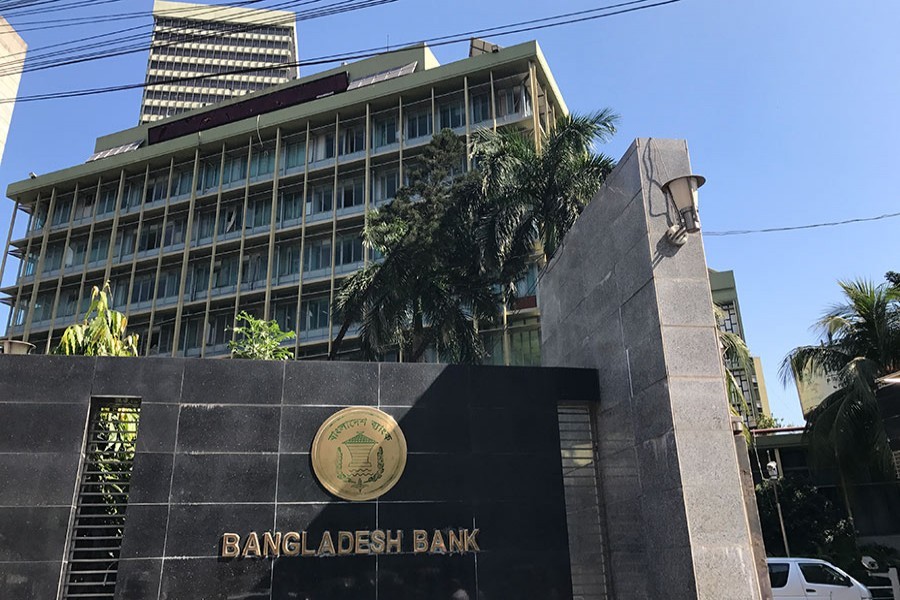Bangladesh's banking system, especially the central bank, falls behind the country's growth, creating a mismatch, says an expert.
"If you look at the major indicators of Bangladesh's economy, including GDP and budget, it has jumped many, many times over the decades. But the banking sector has not," former Governor of Bangladesh Bank Dr. Mohammed Farashuddin told a regional banking conference in Dhaka on Sunday.
Bangladesh Institute of Bank Management (BIBM) has organised the two-day event which is being participated by banking delegates from Bangladesh, India, Nepal, and Bhutan.
"The capacity of the banking system, particularly the central bank, to deal with the growth of the country as well as the enormous complexities of the world has not developed," he said.
"And that is the reason for many of the inadequacies in our banking sector," the former central bank governor cautioned.
Dr. Farashuddin was also critical about the reform that was brought in the banking sector in the early 90s when all banks were permitted to provide long-term loans.
"One of the major developments in our banking sector took place in 1991-92 when all the scheduled banks were dragged into giving long-term loans," he said. "And that was the beginning of lot of the problems."
Until then, he noted, commercial banks had done proper banking.
Mr Farashuddin was also critical of the BB mandate to provide 'auxiliary assistance in the socioeconomic development of the country'.
"All central banks in the world have only two objectives- one is the formulation and implementation of monetary policy for maintaining the value of the local currency and the other is bank supervision," he said.
"But if you look at the Bangladesh Bank order, there is a third objective-auxiliary assistance in the socioeconomic development of the country. And that is contradictory to other two objectives," the ex-governor told the meet.
Earlier, speakers emphasised greater regional knowledge sharing among the South Asian nations in the financial arena.
They especially focused on the experiences of Nepal which has been able to maintain a very low non-performing loan (NPL) ratio of less than 2.0 per cent.
"The main reason behind our low NPL ratio is our structure. In addition, independence of the risk-management unit is ensured in our banking system while the loan-approval system quite synchronized," said Bhuvan Kumar Dahal, Chief Executive Officer of Sanima Bank of Nepal."
"The relevant acts are also very stringent regarding bad loans," he added.
Citing the example of Bhutan which channels a large chunk of its bank loans to micro, small and medium enterprises, Dr. Farashuddin said Bangladesh could emulate the example of Bhutan in increasing the financing of the small and medium enterprise (SME) sector.
Bangladesh Bank Chief Economist Dr. Faisal Ahmed in his speech noted that although the overall savings rate is quite high in the South Asian region, most of these savings are not translating into investment through the formal financial sector.
Chairman of the Association of Bankers Bangladesh (ABB) Syed Mahbubur Rahman called for creating a very good bond market as well as restructuring the Bangladesh Securities and Exchange Commission (BSEC).
Dean of the faculty of Business Studies of the University of Dhaka Shibli Rubayat ul islam called for adopting a common currency for the South Asian countries for fostering regional trade.
Earlier, during the opening session of the event, Bangladesh Bank Governor Fazle Kabir said regional conferences like this can bring out innovative ideas which can help Bangladesh to strengthen its financial sector.
Director-General of BIBM Dr. Toufic Ahmad Choudhury in his speech called for taking a cautionary approach in adopting new technologies in the financial sector.
"How can we go for quick adoption of fintech when our monetization ratio is less than 55 per cent and a large chunk of the money supply comes from outside the bank," Mr Choudhury asked.
"We are not against fintech but this sort of things should be customized in line with our context. Otherwise, these things would create a sort of financial divide," he added.


